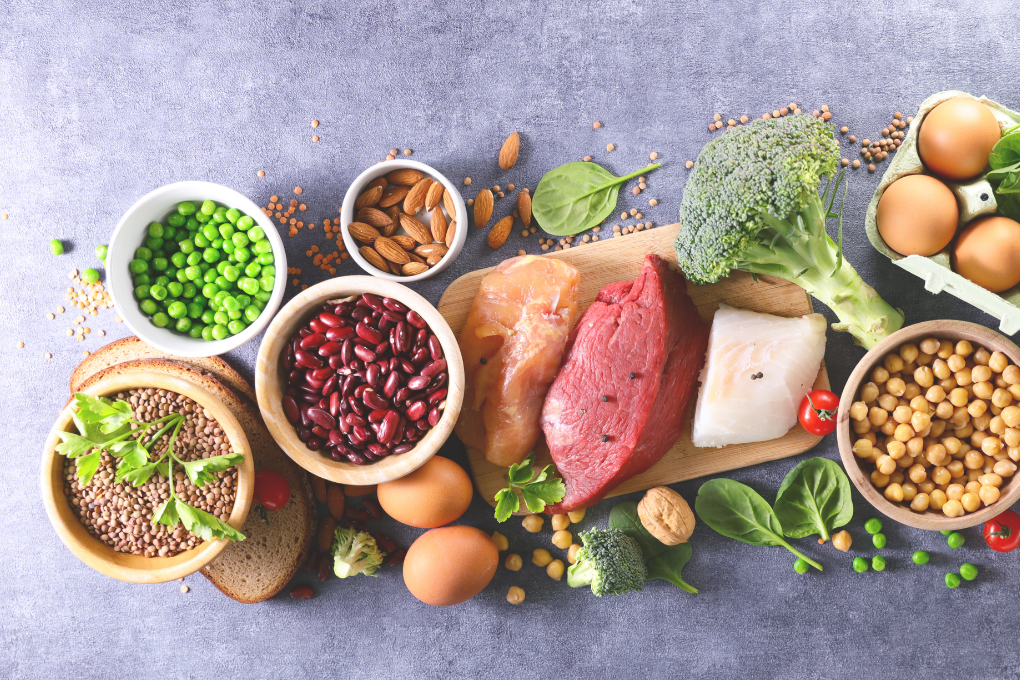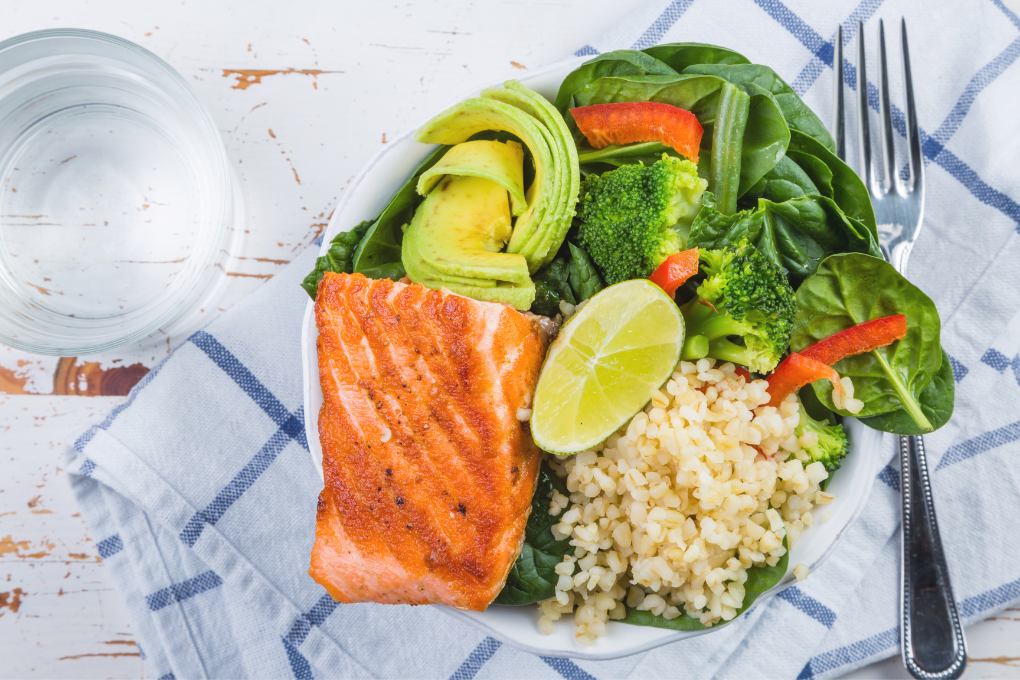Nutrition, Gut Health, Nourish Health Food Pharmacy
4 Step Guide to Build a Balanced Meal
When eating healthy, we need to start with the basics. Before you go out and spend money on expensive supplements, have a think about what you could improve or add to your diet for your health. Consuming a balanced meal will ensure you stay full, maintain a healthy gut, help with weight loss or maintenance, and give your body the energy it needs to work efficiently.
This simple guide will show you how to create a balanced meal by following these 4 steps:
Step 1: Choose a protein source
Protein is one of the 3 macronutrients and it plays a role in growth and development, hormones, nutrient transportation, and much more. Protein is important to include at every meal and snack as it is the most satiating nutrient. This means it keeps us full for longer than the other macronutrients.
Research shows that this occurs for 2 reasons. The first is that due to its complex chemical structure, it takes the body longer to break down. This can also be useful if you are trying to lose weight, as it takes more energy (calories) to do so. Secondly, protein has the ability to interact with hormones such as Ghrelin, Cholecystokinin (CCK) and Peptide YY that regulate appetite and hunger.
Start by filling a quarter of your plate or bowl with a quality protein source such as the following:
- Chicken
- Turkey
- Lean beef
- Eggs
- Salmon
- Tuna
- Tofu
- Tempeh
- Lentils
- Chickpeas
- Beans
- Textured soy protein
- Greek yoghurt
- Quinoa
- Oats

Step 2: Choose a carbohydrate source
Carbohydrates are the body and brains’ preferred energy source, as they are quick and easy for the body to access and use. There are 2 major types of carbohydrates found in foods: simple and complex. Simple carbohydrates are just that, simple and easy for the body to digest and break down. These include table sugar, syrups, and fruit juice. Complex carbohydrates contain longer chains of glucose molecules that are more difficult for the body to breakdown. These are in foods such as whole grains, legumes, and vegetables.
When building a balanced meal, we want to opt for complex carbohydrates that are high in fibre. Fibre is a type of complex carbohydrate that is the indigestible parts of plant foods. It helps to maintain a healthy digestive system, keep us feeling full, and prevent some chronic diseases. It also feeds the probiotics that live in our gut and keeps them alive and thriving.
Fill a quarter of your plate, or about a fist sized amount, with the following complex carbohydrate sources:
- Wholemeal or wholegrain pasta
- Brown rice
- Wholegrain bread
- Potato/sweet potato
- Quinoa
- Buckwheat
- Oats
- Lentils
- Beans
- Fruits
- Vegetables

Step 3: Choose a variety of colours
Fruits and vegetables are a source of complex carbohydrates, but they are also so much more than that. They contain vitamins, minerals, antioxidants, and polyphenols that all play a role in our health. What’s more is that different coloured fruits and vegetables contain different nutrients and polyphenols so we need to make sure we are getting a variety in our diet.
Try to include 2-4 different colours on your plate, and change it up each time you go to the shops. For example, when you have vegetables with your lunch or dinner try having carrots, broccoli and red capsicum to get 3 different coloured veggies in. Or for your breakfast topping include strawberries and kiwi fruit.
Step 4: Choose a healthy fat source
Fats are an important part of our diet, but some are healthier than others. Saturated fats are found in butter, coconut and animal fats and in high amounts can increase our risk of chronic diseases. Unsaturated fats on the other hand are important to include in a healthy diet. This type of fat help to reduce the risk of diseases such as heart disease, lower cholesterol levels, keep the skin healthy, and assist with brain structure and function.
Although fats are great for us, we don’t need as much as the other nutrients at each meal. Aim for around 1-2 thumb sized amounts of fat per meal. The following foods are rich in healthy unsaturated fats:
- Avocado
- Firm tofu
- Salmon
- Extra virgin olive oil
- Walnuts
- Macadamias
- Chia seeds
- Pumpkin seeds
- Hemp seeds
- Flax seeds
- Peanut butter
- Tahini

To summarise
You’ve probably noticed that some foods have appeared on more than one of the food lists (ie oats, salmon and tofu). This is because foods aren’t just made up of one nutrient, they provide a whole bunch of important macro and micronutrients for our body. A balanced meal requires 4 main components: protein, carbohydrates (fibre), and healthy fats, as well as a variety of colours. Following this simple guide will help you build a balanced meal that will keep you full and give your body the energy it needs to work efficiently.



